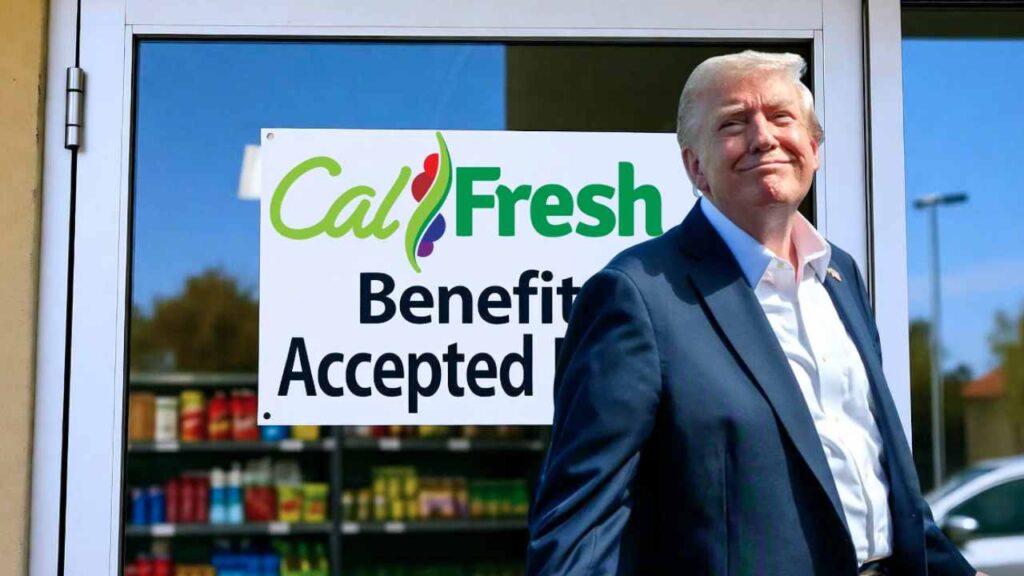Millions of Californians who rely on food assistance from the CalFresh program (the local version of SNAP benefits) are experiencing a roller coaster of change. Just as they received a modest increase in their benefits, a new federal law threatens to take them away, plunging them into uncertainty.
For starters, some good news: starting October 1, families receiving CalFresh saw a slight increase in their funds. This adjustment, which is made annually based on the cost of living, was a small respite for lower-income households.
For example, a family of four will receive about $19 more per month, and a family of six will see an additional $33, if both hypothetical households qualify for the maximum monthly amount.
New CalFresh amounts from October
As we mentioned at the beginning, starting October 1, CalFresh benefits increased thanks to the annual cost-of-living adjustment (COLA), offering a temporary reprieve to low-income families amid a year of unstable inflation that threatens to erode the purchasing power of American households.
We’re not used to inflation in the United States, and that worries us a bit, but mechanisms like the COLA are designed to address that impact.
According to federal guidelines from the U.S. Department of Agriculture (USDA), the maximum amounts for households in the 48 contiguous states, including California CalFresh payments, are as follows:
| Household Size | Previous Maximum Benefit (up to Sept. 2025) | New Maximum Benefit (Oct. 2025 – Sept. 2026) | Increase |
|---|---|---|---|
| 1 person | $292 | $298 | +$6 |
| 2 people | $536 | $546 | +$10 |
| 3 people | $768 | $785 | +$17 |
| 4 people | $975 | $994 | +$19 |
| 5 people | $1,155 | $1,183 | +$28 |
| 6 people | $1,386 | $1,419 | +$33 |
| 7 people | $1,532 | $1,568 | +$36 |
| 8 people | $1,751 | $1,792 | +$41 |
Note: For each additional person, add $224. These amounts apply to eligible households in California through CalFresh, and the minimum benefit for 1-2 person households with very low income increased from $23 to $24 monthly.
However, the shadow of the controversial “One Big Beautiful Bill Act” (OBBBA), signed by President Donald Trump on July 4, 2025, threatens to reverse these gains with imminent cuts and stricter work requirements that took effect immediately and will intensify starting November 1.
Trump and the changes introduced by the OBBBA bill
On July 4, then-President Donald Trump signed the controversial One Big Beautiful Bill Act (OBBBA), a law that is already beginning to implement cuts and tougher new regulations. Although he called it a “gift to the American people,” many advocates for low-income families see it as a blow to the structure of Social Security and food assistance programs.
Here’s what the new law means for people in California
Work or lose benefits: For adults without dependent children, the rules have become much stricter. Now, if they can’t prove they work at least 20 hours a week, they can only receive aid for three months every three years.
Although the exemption was extended to some people up to age 60, options were closed for veterans or people living in rural areas, who previously qualified without problems. According to the Urban Institute, this could leave nearly three million young adults without access to aid.
Funds at risk: The law did not allocate all the money needed to fund the SNAP program in 2026. This could mean the government will be unable to process new benefits starting November 1, affecting some 4 million people who could see their EBT cards empty. In California, where more than 5 million people use CalFresh, such a cut amid inflation would be devastating.
More hurdles to qualify: It’s now harder to enter and stay in the program. Income thresholds for eligibility have been lowered and changes in family circumstances are required to be reported more frequently, which could push previously stable households out of the program.
If you are a beneficiary and believe any of these changes impact you, contact your CalFresh office or community organization involved with the program right now to request immediate and urgent assistance.
